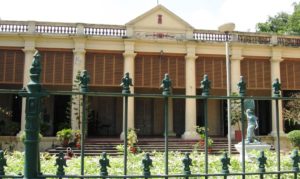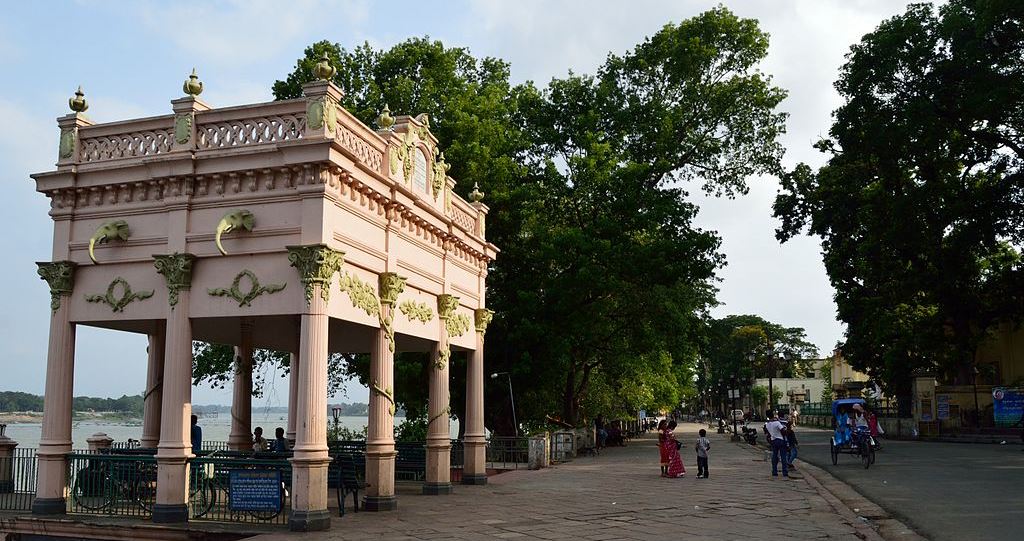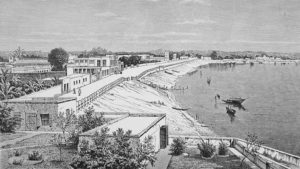On January 12, 2018 the Director of the French Institute in India, Bertrand de Hartingh called on local stakeholders in the city of Chandannagar in West Bengal to help fund the transformation of the run-down former French colony into a tourism hub. The West Bengal government expressed interest in doing so.
Chandannagar (formerly spelled “Chandernagore”), is about 35 kilometers (22 mi) north of Kolkata, within the area covered by the Kolkata Metropolitan Development Authority. Located on the Hooghly River, the city has managed to maintain a very unique identity within India.
Chandannagar was established as a French colony in 1673, when the French obtained permission from Ibrahim Khan, the Mughal subadar of Bengal, to establish a trading post there.
It became a permanent French settlement in 1688, and in 1730 Joseph François Dupleix was appointed governor of the city, during whose administration more than two thousand brick houses were erected in the town and a considerable maritime trade was carried on. For a time, Chandannagar was the main center for European commerce in Bengal.

French Governor’s palace (now adaptively reused as the Chandannagar Museum).
Photo by Aryan Paswan via Wikipedia.
There are 99 heritage buildings in Chandannagar that retain French architectural influences are now private properties, so Hartingh said the restoration would need to be “a people’s project for which we can bring experts but is built on the participation of the owners (of the buildings).” One of the options he put on the table was crowdfunding.
One of the prime candidates for crowdfunded restoration is the Registry Building. Currently, three peepal trees have grown out of the building, and parts of its roof have fallen off. Despite its dilapidated condition, its position on the Rani Ghat jetty along the banks of the Hooghly still commands attention with its architectural splendor.
A few years ago, the Chandannagar Municipal Corporation declared the late 19th century Registry Building unsafe and issued orders to bring it down. While heritage lovers and activists managed to prevent its demolition, efforts to restore the structure are yet to begin.
However, an innovative proposal earlier this month from the French Consul General in Kolkata, Daimen Syed, has raised hopes not only for the crumbling Registry Building but also other heritage buildings in equally dire straits in the erstwhile French colonial trading town.
Chandannagar has been caught between its deteriorating architectural heritage and the aspirations of modernity in new India, has seen various conservation attempts by architects, government agencies and NGOs such as INTACH since the 1980s, despite an active lobby of builders trying to tear it all down. This French colonial cousin owes much of its current focus on restoration to a passionate effort by award-winning conservation architect Aishwarya Tipnis through a heritage conservation and community engagement project that is still ongoing.
Aishwarya Tipnis graduated from the School of Planning & Architecture New Delhi and received a master’s degree in European Urban Conservation with distinction from the University of Dundee, Scotland in 2007. A recipient of the Commonwealth Professional Fellowship 2011, Bonjour India Embassy of France Travel Fellowship 2010, Architectural Heritage Society of Scotland Award 2007, she has authored Vernacular Traditions: Contemporary Architecture. “Heritage plays an important role in the identity of a place, it reflects its image and reveals stories of its past epitomising its sense of character. If understood and managed properly it has the power to effectively contribute to the overall quality of urban environment as well as serve as the starting point of sustainable urban development.” she says.
Tipnis says “While seven of the earmarked 99 heritage properties have been listed by West Bengal Heritage Commission, we are working to restore all the 99, including the Registry building … We are preparing for the next phase of Registry building restoration.”
Featured photo of Chandernagore Strand Park on the Hooghly River by Biswarup Ganguly via Wikipedia.
Photo of


